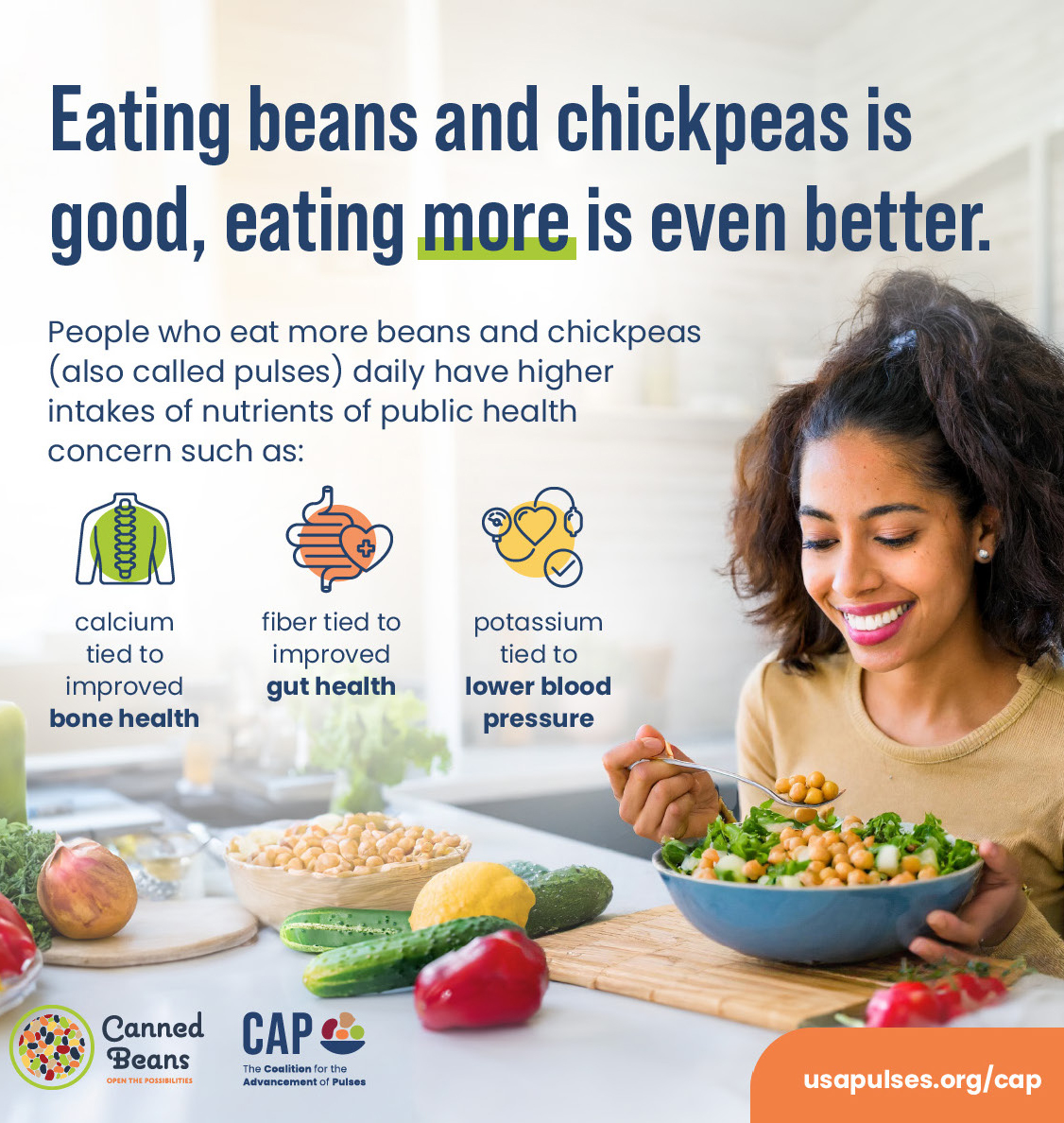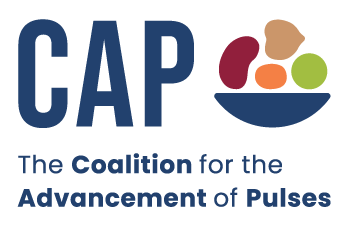|
|
 A recently published study in Nutrients, an open-access peer-reviewed scientific journal, demonstrates that exchanging pulses for small amounts of typical protein sources and refined grains significantly improves the nutritional profile of the American diet. Researchers modeled the nutritional impact of substituting servings of protein foods and/or refined grains with servings of pulses (e.g. dry peas, lentils, chickpeas, dry beans) while keeping calories consistent in the Healthy U.S.-Style Dietary Pattern identified in the 2020-2025 Dietary Guidelines for Americans. Results showed an improved nutritional profile of the diet. Specifically, the addition of about ¼ cup of pulses per day in place of one ounce per day of common protein foods increases fiber, a nutrient of concern, and decreases cholesterol, each by more than 10%. Additionally, they found that substituting ½ cup of pulses daily in place of one ounce of refined grains daily also while keeping calories constant increases fiber, magnesium, copper, and potassium, a nutrient of concern, by more than 10%. “Our results suggest that encouraging increased pulse consumption may be an effective strategy for improving nutrient intake and achieving a healthier dietary pattern,” states author Victor Fulgoni III, PhD, of Nutrition Impact, LLC. “Pulses (dry peas, lentils, chickpeas, beans) are excellent sources of fiber, folate and potassium and good sources of plant protein. The findings are consistent with the body of existing peer-reviewed studies that show the inclusion of pulses as part of a plant-forward dietary strategy imparts cardiovascular, metabolic, and gut protective effects; improves weight outcomes, low-grade inflammation, and may play a role in immune-related disease risk management.[ii] The American Heart Association and other public health organizations recommend adding more plant-based proteins and less animal protein to reduce risk of heart disease, high blood pressure and high cholesterol.[iii] A recently published study in Nutrients, an open-access peer-reviewed scientific journal, demonstrates that exchanging pulses for small amounts of typical protein sources and refined grains significantly improves the nutritional profile of the American diet. Researchers modeled the nutritional impact of substituting servings of protein foods and/or refined grains with servings of pulses (e.g. dry peas, lentils, chickpeas, dry beans) while keeping calories consistent in the Healthy U.S.-Style Dietary Pattern identified in the 2020-2025 Dietary Guidelines for Americans. Results showed an improved nutritional profile of the diet. Specifically, the addition of about ¼ cup of pulses per day in place of one ounce per day of common protein foods increases fiber, a nutrient of concern, and decreases cholesterol, each by more than 10%. Additionally, they found that substituting ½ cup of pulses daily in place of one ounce of refined grains daily also while keeping calories constant increases fiber, magnesium, copper, and potassium, a nutrient of concern, by more than 10%. “Our results suggest that encouraging increased pulse consumption may be an effective strategy for improving nutrient intake and achieving a healthier dietary pattern,” states author Victor Fulgoni III, PhD, of Nutrition Impact, LLC. “Pulses (dry peas, lentils, chickpeas, beans) are excellent sources of fiber, folate and potassium and good sources of plant protein. The findings are consistent with the body of existing peer-reviewed studies that show the inclusion of pulses as part of a plant-forward dietary strategy imparts cardiovascular, metabolic, and gut protective effects; improves weight outcomes, low-grade inflammation, and may play a role in immune-related disease risk management.[ii] The American Heart Association and other public health organizations recommend adding more plant-based proteins and less animal protein to reduce risk of heart disease, high blood pressure and high cholesterol.[iii]
|
| |
 A recently published study in Nutrition Journal, an open-access peer-reviewed scientific journal, demonstrates that eating beans (including canned and/or dry packaged kidney beans, black beans, and/or pinto beans) and chickpeas is associated with greater intake of shortfall nutrients, including nutrients of public health concern, and significantly higher diet quality scores. Additionally, the study finds that bean and/or chickpea consumption is associated with improved weight-related outcomes, including lower body mass index, body weight, and improved waist circumference. This new research adds to the growing body of evidence that showcases the multiple benefits of including beans and chickpeas as part of a healthy dietary pattern. A recently published study in Nutrition Journal, an open-access peer-reviewed scientific journal, demonstrates that eating beans (including canned and/or dry packaged kidney beans, black beans, and/or pinto beans) and chickpeas is associated with greater intake of shortfall nutrients, including nutrients of public health concern, and significantly higher diet quality scores. Additionally, the study finds that bean and/or chickpea consumption is associated with improved weight-related outcomes, including lower body mass index, body weight, and improved waist circumference. This new research adds to the growing body of evidence that showcases the multiple benefits of including beans and chickpeas as part of a healthy dietary pattern.
|



